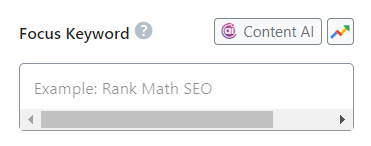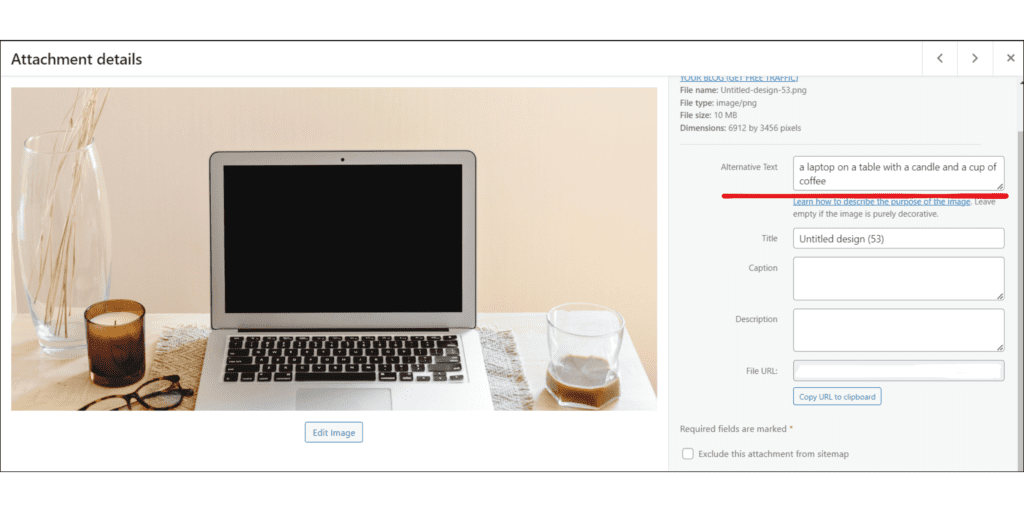SEO is something which your blog can’t live without. It’s a necessity for long lasting growth of your blog.
The Google algorithm keeps changing and evolving from time to time and that’s why SEO is becoming more and more complex day by day.

Personally, I have a love-hate relationship with SEO. I despise it. I really don’t enjoy doing it but it’s something that gives me really good results.
I am pretty sure you are here because you are having difficulty understanding this SEO thing. You might find it confusing or ‘too techy’ to understand. Trust me, I’ve been there.
When I was new to SEO, I found it confusing too. I made a lot of mistakes and gradually learnt how to fix them. Now, I can say I am pretty confident about it.
There’s a lot to do in SEO. First there is on-page SEO where you have to optimize the Titles and descriptions of your blog posts.
Then there is technical SEO where you have to focus on more technical stuff.
And lastly there is off-page SEO where you have to build backlinks and reach out to people.
Here’s a good thing, blog SEO is fairly simple to do. I’ll tell you everything you need to know about blog SEO in this post. Here are 10 steps to optimize blog SEO and get some sweet organic traffic on your blog!
Grab a cup of coffee, a notebook and a pen. Sit back and let’s jump straight to the tips!

- 1- INSTALL A GOOD SEO PLUGIN
- 2- CONDUCT A KEYWORD RESEARCH
- 3- OPTIMIZE META TITLE, META DESCRIPTION AND URL OF YOUR BLOG POST
- 4- DO INTERNAL AND EXTERNAL LINKING
- 5- OPTIMIZE IMAGE SIZE AND ADD ALTERNATIVE TAGS
- 6- OPTIMIZE THE HEADINGS OF YOUR PAGES & POSTS
- 7- CANONICAL URL
- 8- IMPLEMENT SCHEMA MARKUP
- 9- SUBMIT YOUR PAGES TO INDEX
- 10- BUILD QUALITY BACKLINKS (OFF-PAGE SEO)
1- INSTALL A GOOD SEO PLUGIN
If you have a WordPress site, you can install a good SEO plugin. The two most popular SEO plugins are Yoast SEO and Rankmath. Both of these plugins are equally good so you can install either one of them (both are free to use too).
My personal favorite SEO plugin is Rankmath. I find it much simpler to use and easier to understand than Yoast SEO. Anyways,
Both of these plugins can help you:
- Optimize meta Title and description.
- Optimize the URL of your blog post and pages.
- Create a Sitemap of your blog.
- Tells you where and how many times to use keywords.
- Create an automatic schema of posts.
- Add breadcrumbs navigation to pages and posts.
You may find some of these words unfamiliar. Don’t worry, I’ll explain everything to you as we move on.
With the help of these plugins, you can optimize your blog post for SEO as you are writing that post. Before we start optimizing our blog post, we need a keyword for it.
Let’s understand what exactly is a keyword and how to do a keyword research.
2- CONDUCT A KEYWORD RESEARCH
A keyword is a phrase or a sentence that people use to search sfor omething on search engines like Google, Yahoo, Bing etc. For example- ‘cake recipe’.
There are two types of Keywords: Short tail and long-tail keywords.
‘Cake recipe’ is a short tail keyword because it only has two words. ‘chocolate cake recipe eggless in microwave’ is a long tail keyword because it has more than two words.
If you use long-tail keywords, your chances of ranking increase because it is more descriptive than a short-tail keyword.
Ok, now you know the basics of what a keyword is. Let’s find out how to do keyword research.
In order to do keyword research, you need a keyword research tool. Some of the well-known tools are SEMrush, Ahrefs and SEranking but you need both expertise and a lot of money to use them. They are expensive…
My recommendation is to go for some free or inexpensive options like:
- Google keyword planner
- Answer the public
- Keysearch
Ok now you have a good keyword research tool. Here’s how to do keyword research.
Choose a topic to write a blog post on and start brainstorming keyword ideas. Ask yourself- ‘If I wanted a solution to this problem, what would I search on Google?’ Let’s take an example.
If I want to bake a chocolate cake (I just love chocolate cake so much) then I would search ‘chocolate cake recipe in microwave’. There! We have our first keyword. Now this keyword can have similar keywords like ‘chocolate cake recipe eggless’ or ‘chocolate cake recipe without egg‘.
Using this method, you’ll have a list of keywords for that blog post. Write them down.
Now you must be thinking – ‘how do I know which keyword is the best?’ or ‘which one should I use for my blog post?’
This is where the keyword research tool jumps in! Open the tool and enter your keywords one by one. You’ll get some information about those keywords. Now. you only have to focus on search volume and competition of that keyword.
As a beginner, I will recommend you to go for those keywords that have low competition and low search volume. Ranking your blog posts is easier that way.
Now we have a ‘seed keyword’ for that blog post. The plugin will tell you where and how many times you have to use that keyword in your blog post. For Rankmath, you have to enter your keyword here 👇

> Related: 3 Free Google SEO tools you must know about!
3- OPTIMIZE META TITLE, META DESCRIPTION AND URL OF YOUR BLOG POST
Have you seen the title and description of a blog post or article on the Google page when you search for something? I am sure you have. Those are called meta title and meta description. This is called optimizing the on-page SEO of your blog post.
On-page SEO is where you can optimize the SEO of a page of your site. We will discuss more on-page SEO practices later in this post.
If I search ‘chocolate cake recipe‘ on Google, I’ll get the following results:

The red underlined text is the meta title and the smaller text below it is the meta description. The keyword ‘chocolate cake recipe’ is used in the meta title, description and URL.
This is called basic SEO where you have to use the keyword in meta titles, descriptions and URL. Keep in mind that a meta title and a blog post title can be different from each other.
In Rankmath, you can edit the meta title and description after entering your keyword. Here’s how:

This is the most important part of on-page SEO. Let’s move on to the next on-page activity.
4- DO INTERNAL AND EXTERNAL LINKING
This is probably the easiest SEO task to perform. So there should be two types of links in your blog post:
- Internal links: Links that redirect people to other pages or posts of your own site.
- External link: Links that redirect people to other pages or posts of another website.
You must use both types of links in each and every blog post. These links are very important for the SEO of your blog post.
You can do internal linking by adding a ‘related post’ section in your blog post. Every blog post must have at least 3-4 internal links after every 300 to 400 words.
If you are using a piece of information from a specific website and using it in your own blog post, you must give credit to that website. This is how external linking is done.
Not just information, if you are recommending a tool, product or service then you can also link out to reputable sources.
5- OPTIMIZE IMAGE SIZE AND ADD ALTERNATIVE TAGS
Did you know that your site must have a page load speed of 0-4 seconds? You can check your site’s page load speed using page speed insights.
If your website takes a lot of time to load then it can affect the user experience and engagement of your site.
That’s a big NO NO!
Reason for low page load speed- Images used on your site are too heavy or high resolution. Images should be under 100 KB.
Here are some ways to optimize the size of the images-
- Install a plugin called smush and use it to reduce image size without losing quality.
- Download images in small sizes from stock websites.
- Choose the right image format before uploading.
Reducing the size of the images is not the only way of image optimization. You should also give your images ‘alternative tags‘ or ‘alternative texts‘.
Here’s how to do alt tags of your sites’ images:
- Login to your WordPress Dashboard and go to media>library.
- Click on any image and you’ll see an option of ‘alternative text’ on the right side.
- Describe the image in the ‘alternative text’ option.
Like this 👇

You have to do an alt tag of every image on your website.
Also, delete any extra or unused images.
6- OPTIMIZE THE HEADINGS OF YOUR PAGES & POSTS
There are six types of headings- H1, H2, H3, H4, H5, H6.
H1 is the main heading of a page whereas H2, H3, H4, H5 and H6 are subheadings. Every page and post of your site must have an H1 and H2. The remaining headings are optional.
For example- If you are writing a blog post about ‘types of coffee‘ then the H1 is the title of the blog post like ‘A guide to different types of coffee‘ and the H2 titles can be the sub topics of that blog post like ‘types of coffee beans‘ and ‘types of coffee drinks‘.
H3 is the sub-topic of H2. If the H2 is ‘types of coffee beans‘ then the H3 can be ‘Arabica‘. I hope now you got the basic idea of headings and sub headings.
You can switch between H2 to H3 or H3 to H4 in the WordPress blog post editor like this:

7- CANONICAL URL
Every page and post of your site must have a unique URL. A canonical URL is the main URL that helps search engines determine the main version of the page from other identical pages.
Here’s how to add a canonical URL of a page/post-
- Using Yoast SEO: Select the advanced option in the Yoast SEO meta box in the WordPress post editor and paste the link of that blog post in the ‘canonical URL’ option.
- Using Rankmath: Select the advanced option in the Rankmath meta box in the WordPress post editor and paste the link of that blog post in the ‘canonical URL’ option.
It’s as simple as that 🙂
8- IMPLEMENT SCHEMA MARKUP
When you publish a post, Google has no idea what your post is about. Google is not a human, it can’t understand or read English. So you need to help Google to understand your content.
Here’s the thing, Google can’t understand English BUT it can understand coding or machine language.
Schema is a simple HTML code that helps Google understand your content. But not everyone is a coder especially bloggers like you and me. If you use Yoast SEO or Rankmath, then these plugins will do all the schema work for you.
Since I can’t explain each and every step about how to do schema in this blog post (otherwise this post would be 10,000 words long), I recommend checking out-
How to implement schema using Yoast SEO by Yoast SEO itself and
How to implement schema using Rankmath by Rankmath itself
9- SUBMIT YOUR PAGES TO INDEX
Okay, hear me out. Just hitting ‘publish’ after writing your blog post doesn’t completely publish that blog post on Google.
You have to do some extra steps afterwards publishing your blog post.
To see how many pages and posts are submitted or indexed on Google of your site, enter this in chrome:
site:[yourwebsitename].com
Without the square brackets and spaces and hit enter. If you see any pages or posts missing, here’s how to easily index them:
- Go to Google search Console and click on ‘URL inspection‘.
- enter the URL of the missing post or page and click enter.
- Wait and click on ‘request indexing‘.
It can take a couple of days for Google Search Console to index that page or post. Make sure each page and post is indexed on Google.
10- BUILD QUALITY BACKLINKS (OFF-PAGE SEO)
Building backlinks can increase the ‘domain authority’ of your site and can also give you a good amount of blog traffic.
Here are some easy backlink-building techniques:
- Social bookmarking on sites such as Quora and Reddit.
- Commenting on other bloggers’ blog posts.
- Submitting blog post links to web 2.0 sites.
- Guest posting for other bloggers.
- Publishing your blog on sites such as medium and bloglovin.
- Submitting your website on directory sites.
Make sure that the site on which you are leaving your links on, has a good domain authority. A good domain authority is considered from 20-30.
Here’s how to check the Domain Authority (DA) of a website:
- Go to chrome web store and search ‘MozBar’ in the search bar.
- Install the extension and create a Moz account for free.
- Now visit your own site and click on ‘extensions’ symbol in the tab slot of chrome. Moz extension will now show some numbers. If your website is brand new then the DA would be 1.
You can check the DA of any website using the Mozbar extension easily. Keep in mind that it takes quiet some time to increase the DA of your site. Keep optimizing your content for SEO and build backlinks to increase the authority of your site.
Talking about backlinks, there are two types of backlinks: Do-follow and No-follow. The Google robots ignore the no-follow backlinks so it’s better to focus on more do-follow backlinks.
> Related: 10 free ways to promote your blog posts
These are the most important SEO tips for beginners and bloggers that every website owner must know about.
How many of these SEO practices were you following before reading this blog post and what are your thoughts?
Let me know in the comments below!





Very useful article. My blog is quite young and need all that Seo good thing;))
Thanks for the kind words, Catalina! I am really happy that you found this post helpful. Good luck!
Hi Khushi,
Thank for this information. Really easy to understand. Really like your posts . They are to the point and without fluff!
Thank you so much for your kind words, Eshna! It really means a lot to me. I am really happy that you find my posts helpful.
Pingback: Top 3 Free Google SEO Tools that you Must Have!
Pingback: 10 Important Things I Wish I Knew Before Starting a Blog
This blog post is a gem for SEO beginners like me. It’s relatable, offering practical tips without overwhelming technical details. From optimizing titles to building backlinks, it covers everything in a straightforward way. I appreciate the author’s effort to simplify SEO, making it accessible for all. It’s a must-read for anyone diving into the world of blogging and SEO!
Thanks a lot for your kind words, Trisha!
Great post. Very informative.
Pingback: https://markethio.com/seo-tips-for-beginners | ...
Thanks for the insights! Been blogging since 2020, finally feeling confident with SEO, and your tips will definitely boost my game. Appreciate it!
I am so glad that you found this helpful, Pedja! Good luck 🙂
Pingback: 7 Best Email Marketing Software to Skyrocket your Email List
Saving this for myself later!
Thanks, Joi!
Thank you for sharing. I’ve been blogging since Feb 2023, and I just started getting the hang of things as it pertains to SEO.
This information will go a long way in upping my game. Thank you ❤️
That’s so nice to hear, Joy! SEO will definitely help your blog grow better. Keep learning and thanks for commenting 🙂
Thank you for sharing! I’ve been blogging for almost a year and I’m still familiarizing myself with SEO. I hope the hard work will pay off 🙂
Glad you found this helpful, Giada! Keep learning and optimize your blog for SEO. The hard word will definitely pay off 🙂
I have never heard of schema. Good thing I pinned your post so I can look at those articles you linked. Much needed thank you
Yes, Schema is one of the most important part of SEO. Glad you found this helpful, Tiana!